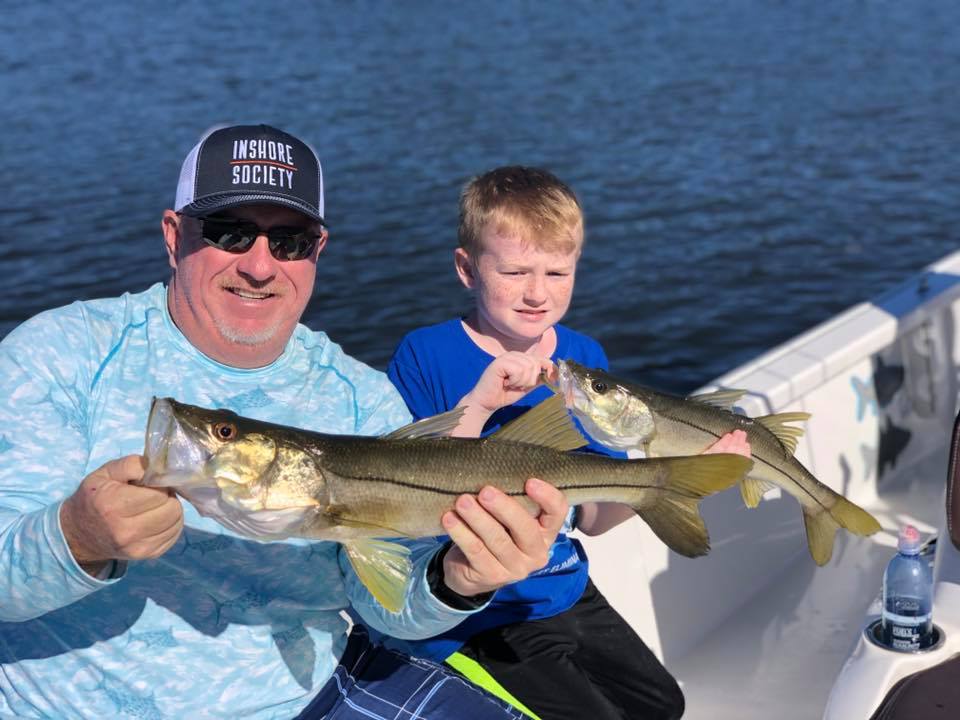It’s January 11th, 2019 and the fishing is off to a hot start! Cold fronts have started showing up and cooling down water temps in the Tampa Bay area. The average water temp inside Tampa Bay is at 68 degrees and the fish have definitely felt it. Fish have already made their migrations into winter time areas such as rivers, creeks, residential canals and the back country.
Fishing trips this time of the year can be very productive if you know what to look for. Planning your fishing trip around the tides is very important especially with the negative tides that we experience. We recently started a charter at 11am due to the tides and our clients caught Snook from the first cast to the last cast for four hours! What to look for? It’s very simple, in negative tides the fish are restricted in the areas that they can be in. Creeks and rivers will hold fish in deeper holes; most of these areas have a muddy and oyster bottom that hold heat in the colder months. Its best to try and fish a moving tide but be aware that fishing an outgoing tide in some places might leave you stuck.
Weather can be the difference between a productive day of fishing and slow bite kind of day. Fishing before upcoming cold fronts is usually a great time to get out, reason being is that those fish will feel the weather starting to change and will be feeding in preparation. During the cold front and a couple of days after will be the toughest bite due to the fact that those fish will need to be acclimated to lower water temps. Depending on the change caused by the cold front it could be worth waiting two to three days before going fishing again.
“Captain what are we going to catch today?” Well, right now we have several species of fish that we can target. Sheepshead, Mangrove Snapper, Trout, Snook and Redfish being at the top of our list this time of the year inside Tampa Bay. If the water temp remains close to 70 degrees the Snook will continue to feed comfortably; if it starts to drop under 65 degrees we can expect for the Snook bite to slow down until spring where they will come back in full force! My favorite time of the year for Snook! As water clarity increases and water temps continue to drop the Trout bite will start to heat up. Sheepshead usually being a great winter time fish to target have already made their way inside the bay and can be caught at bridges, reefs, rock piles and residential canals. The Redfish bite inside the rivers and creeks has been consistent with a few juvenile fish being caught. Mangrove Snapper are holding on major bridges and docks, a great option for someone fishing with kids and looking to catch dinner.
“What are they eating?” Shrimp, Scaled Sardines and artificial baits have been the meal ticket. On colder days the shrimp and artificial baits have actually out fished the sardines, so don’t be afraid to stop by your local bait shop and buy a couple dozen shrimp.
That’s all we have for the January fishing report! We hope that you find this information helpful and it makes you a better angler.
If you have any questions please feel free to comment below.




